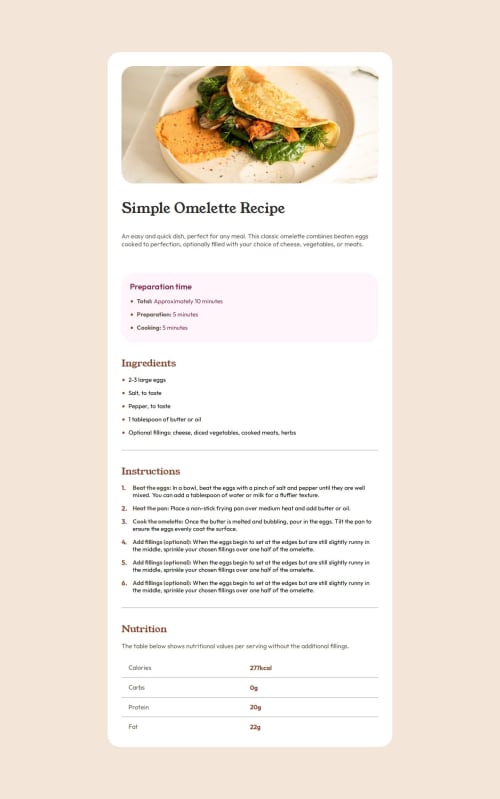RECIPE PROJECT

Solution retrospective
I am most proud of the use of the grid along with the flex and the imagination I was able to use. Next time I won't make mistakes like I noticed now such as elements that repeat and I could have created a common class for them
Please log in to post a comment
Log in with GitHubCommunity feedback
- @MrLanter
Hello, this project is really great, and I appreciate the effort that went into it, congratulations!
I could just recommend you to split the
main.scssfile into several files and then import them all frommain.scss. This method of doing would allow a better readability and maintenance of the code.I also noticed a part of your code quite repetitive which is a problem for maintenance, accessibility, and for the speed to write the code:
&--one::before { content: '1.'; } &--two::before { content: '2.'; } &--three::before { content: '3.'; } &--four::before { content: '4.'; } &--five::before { content: '5.'; } &--six::before { content: '6.'; }The best solution I can suggest is to leave
list-stylevisible for botholanduland change the styles by doingli::marker { color: $myFavoriteColor; font-size: 1rem; }I also noticed that you put an alt for the image, which is good but I think its content could be shorter because it can be truncated.
You imported the text fonts from google fonts only there is already a folder that contains the fonts and I think it would be better to import them from here.
@font-face { font-family: 'font-name'; src: url('url') format('truetype'); /* format value depends on the file format */ font-weight: 400; font-style: normal; }I hope this really helped you, I wish you good luck, bye!
Marked as helpful
Join our Discord community
Join thousands of Frontend Mentor community members taking the challenges, sharing resources, helping each other, and chatting about all things front-end!
Join our Discord